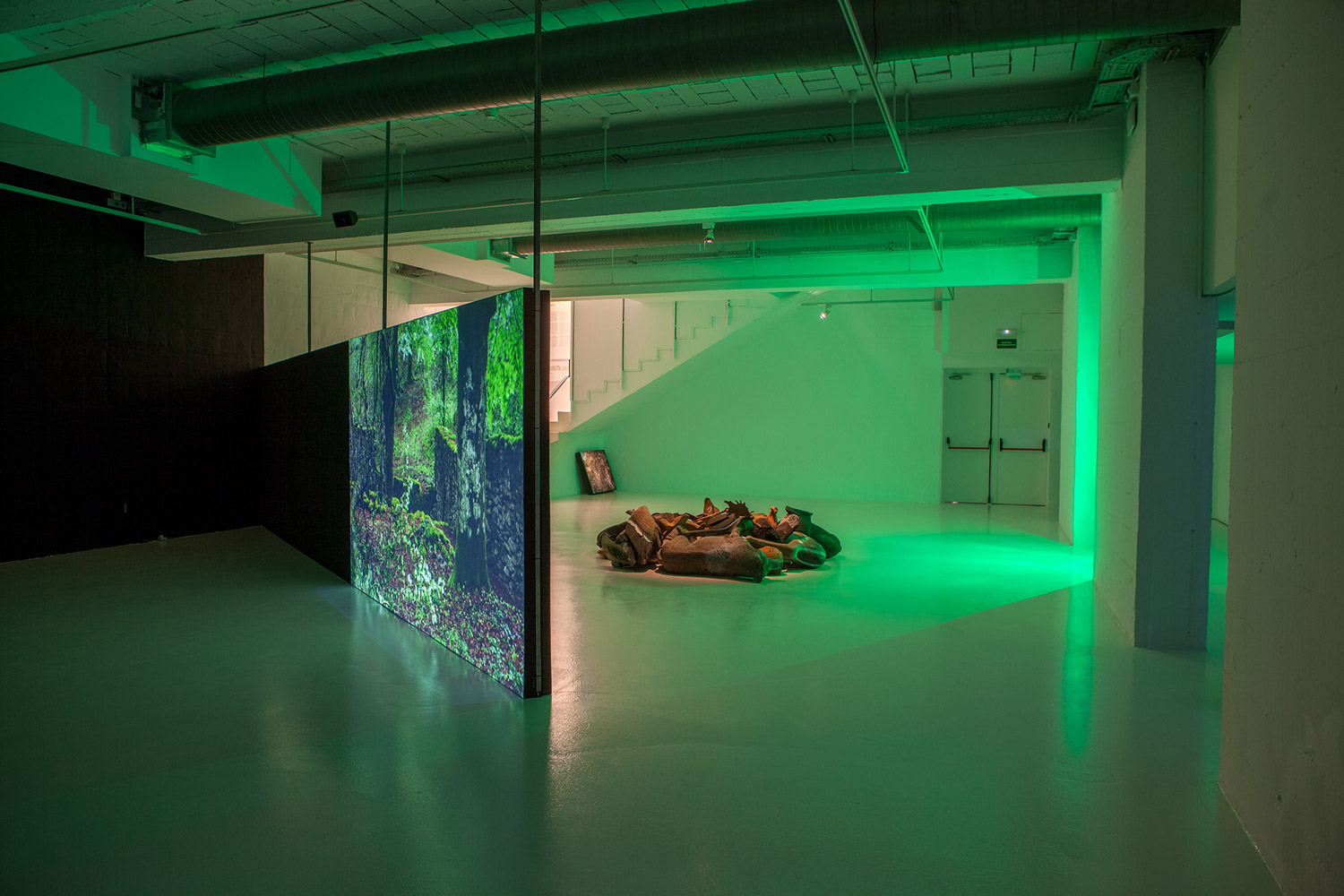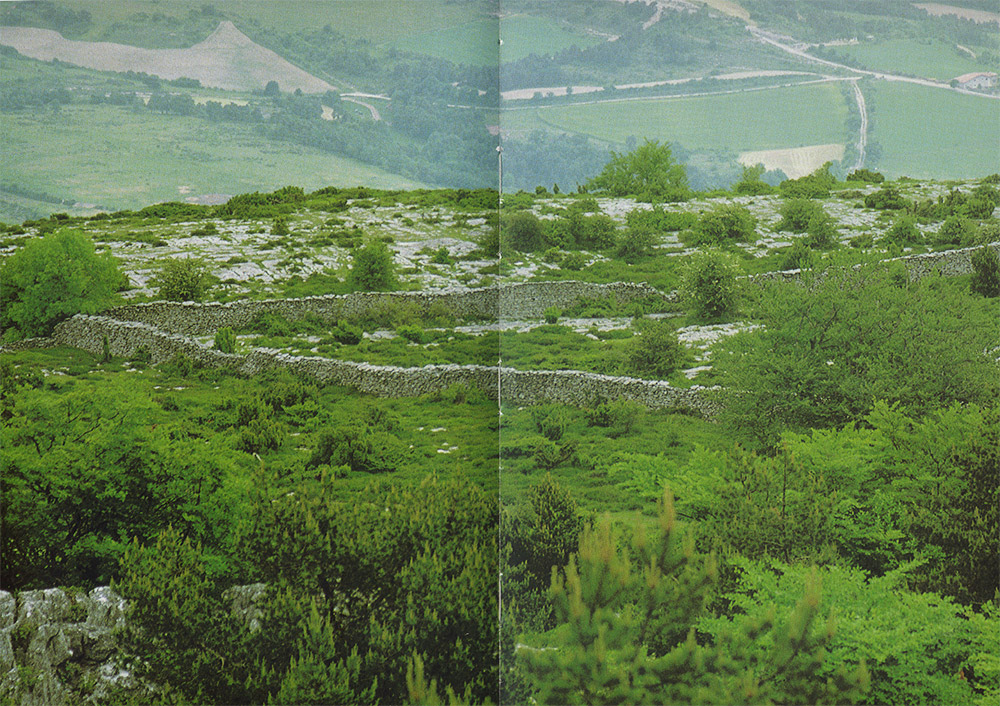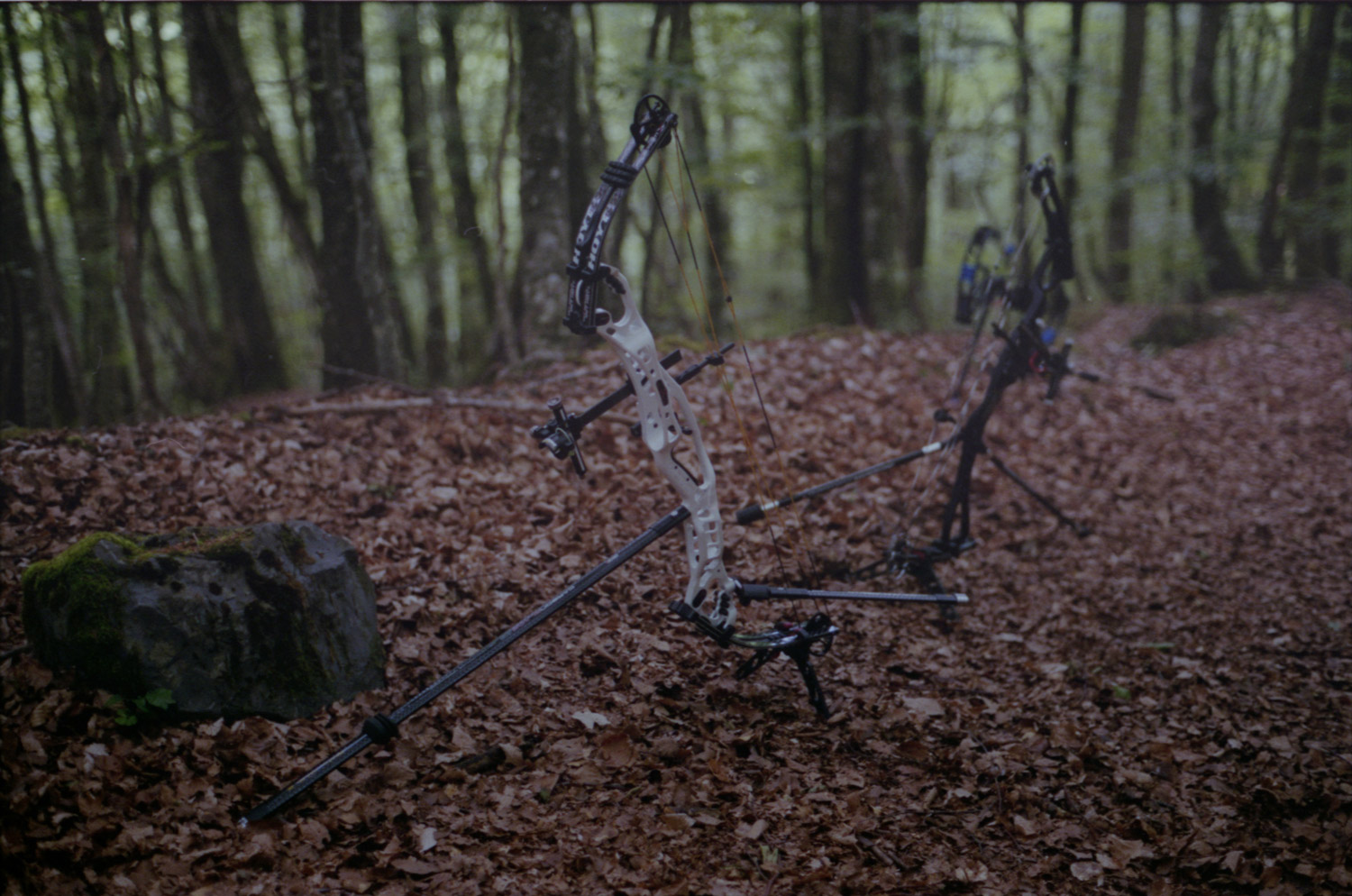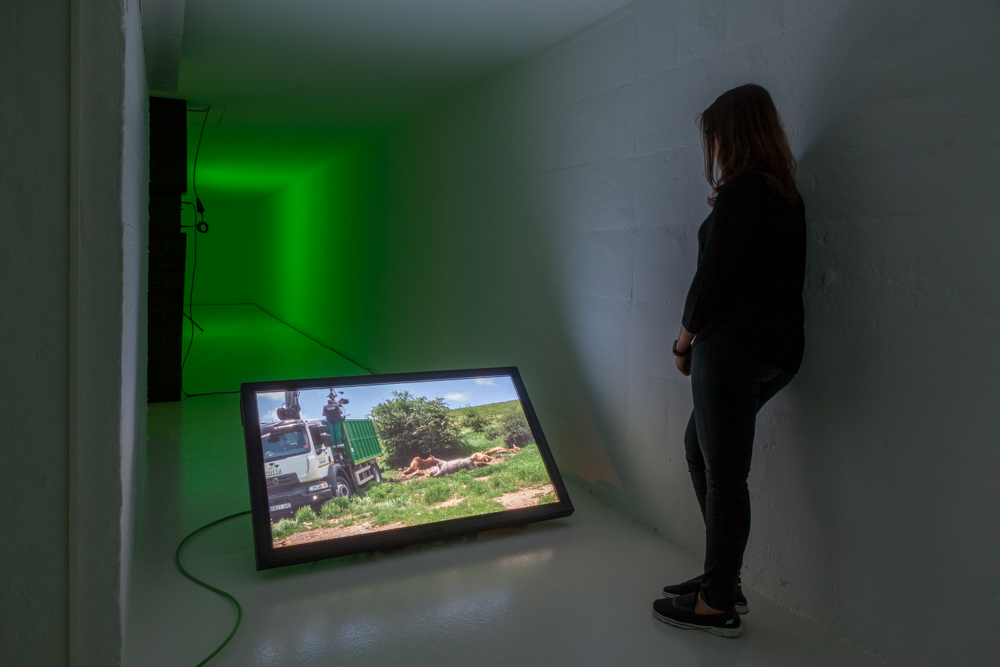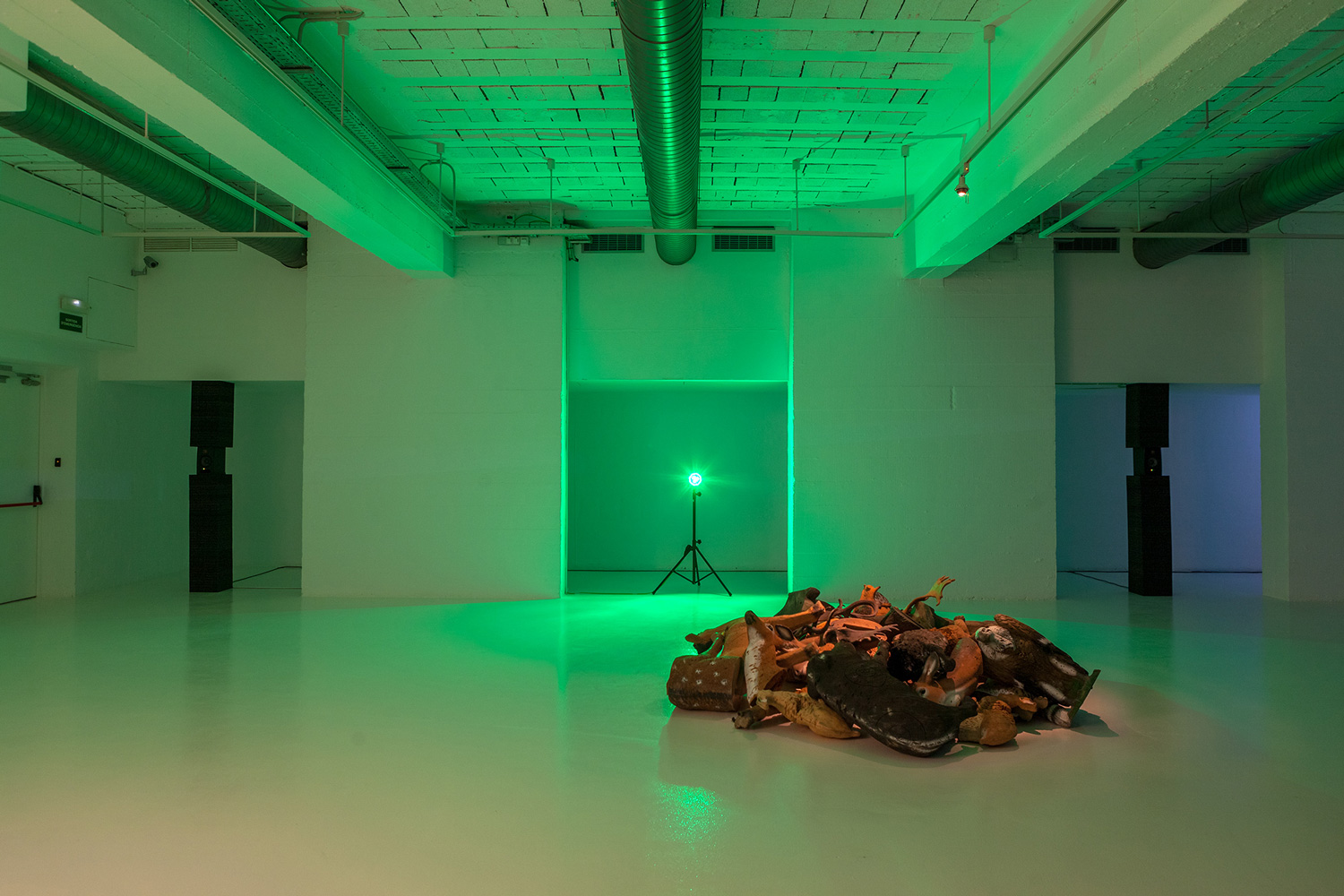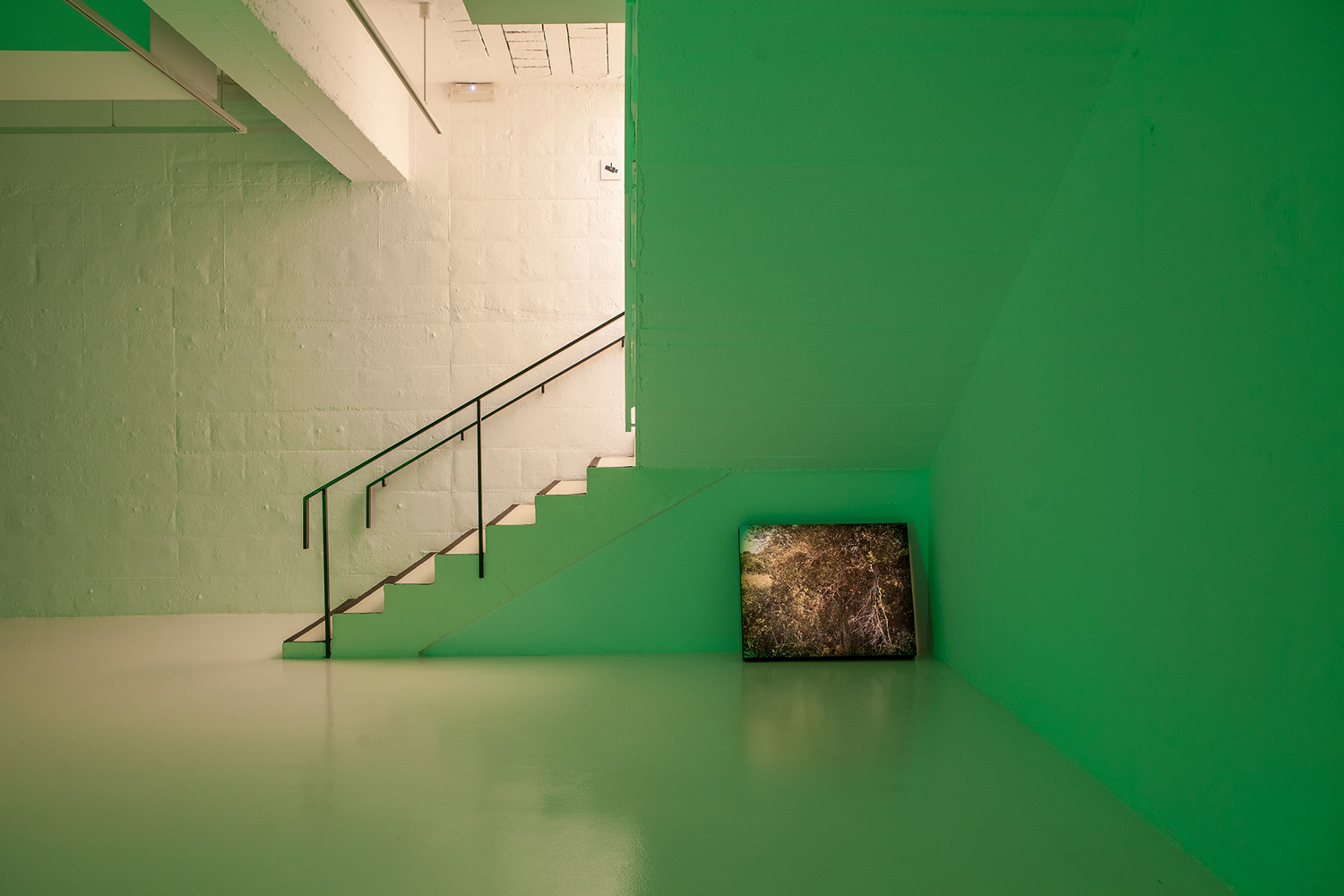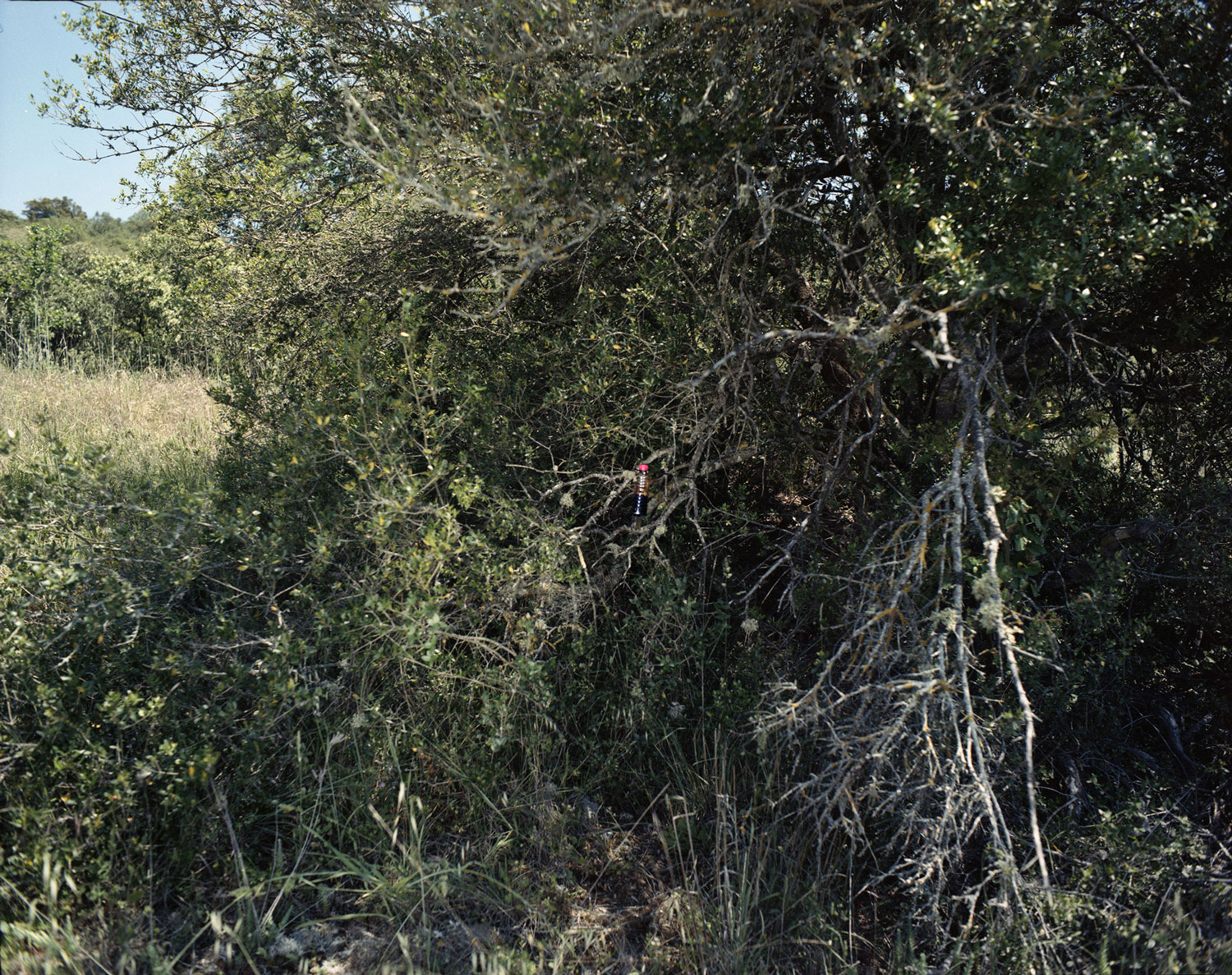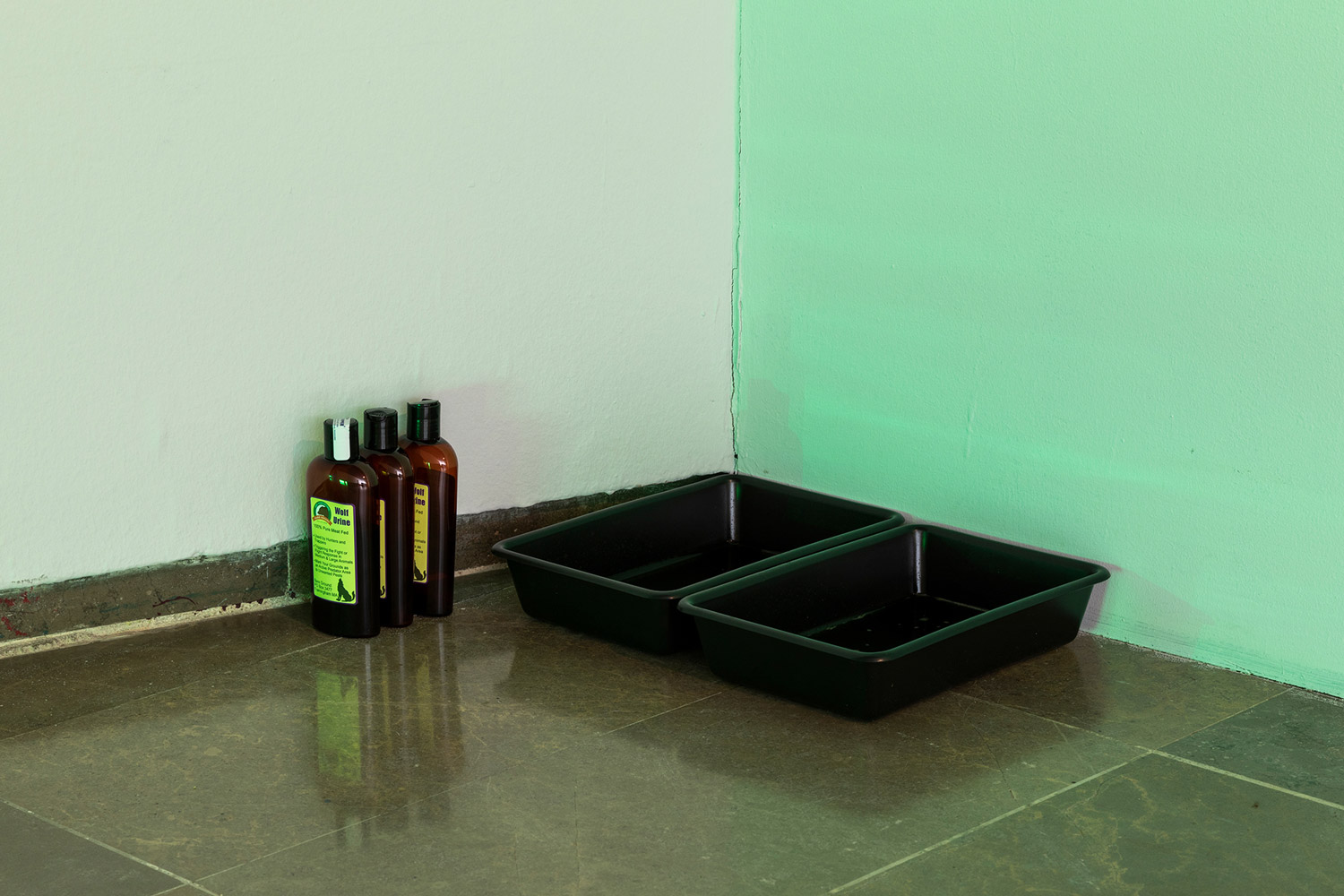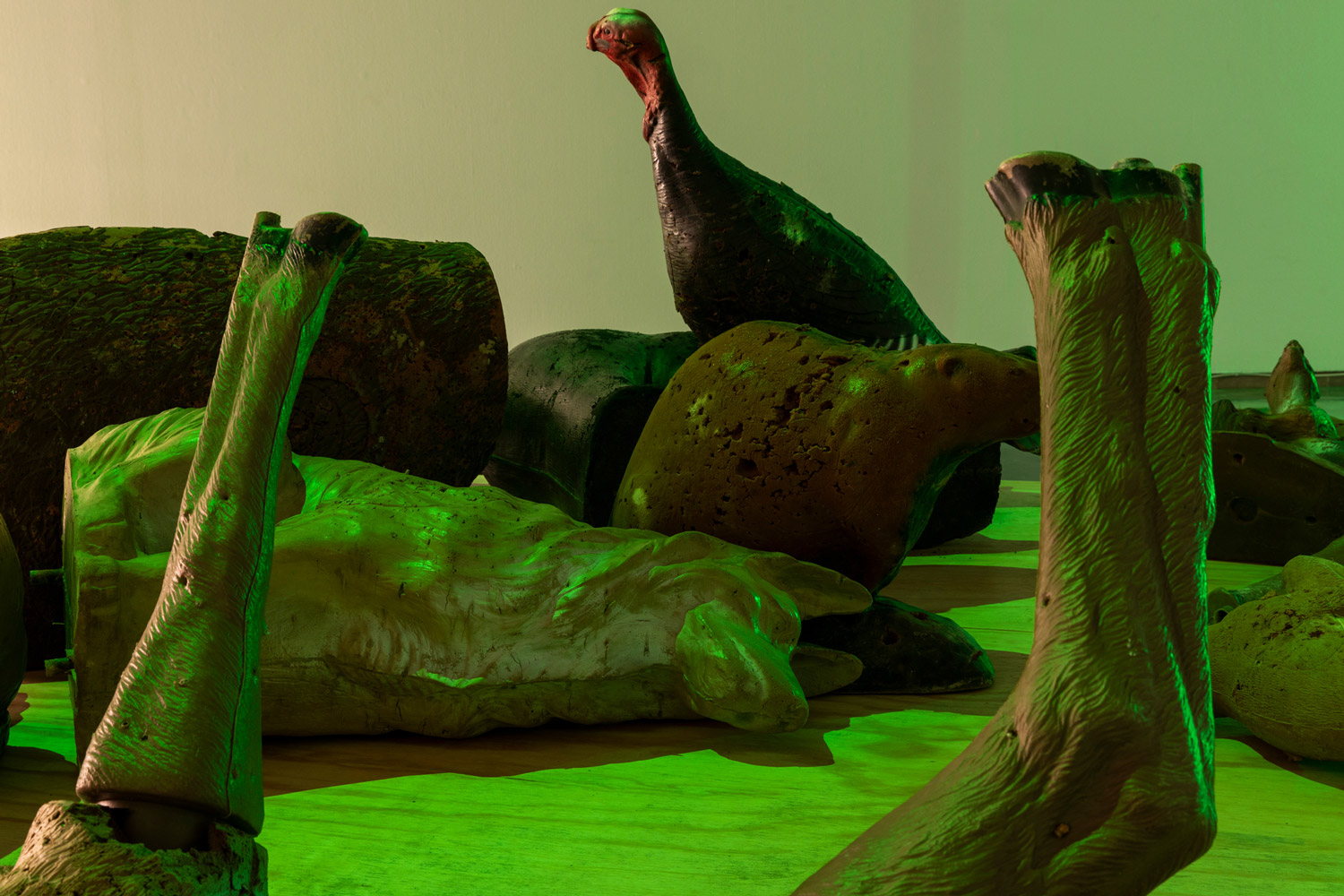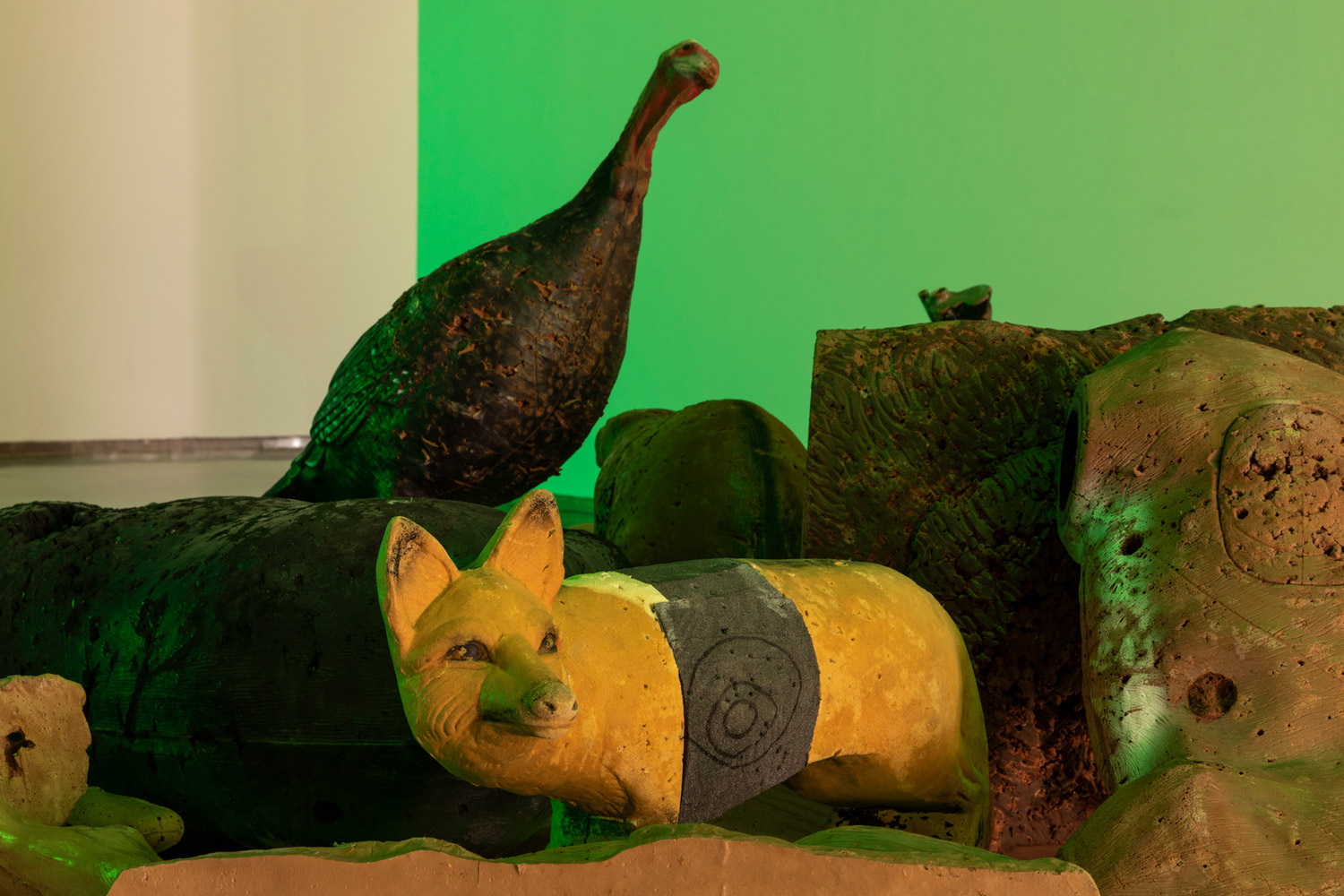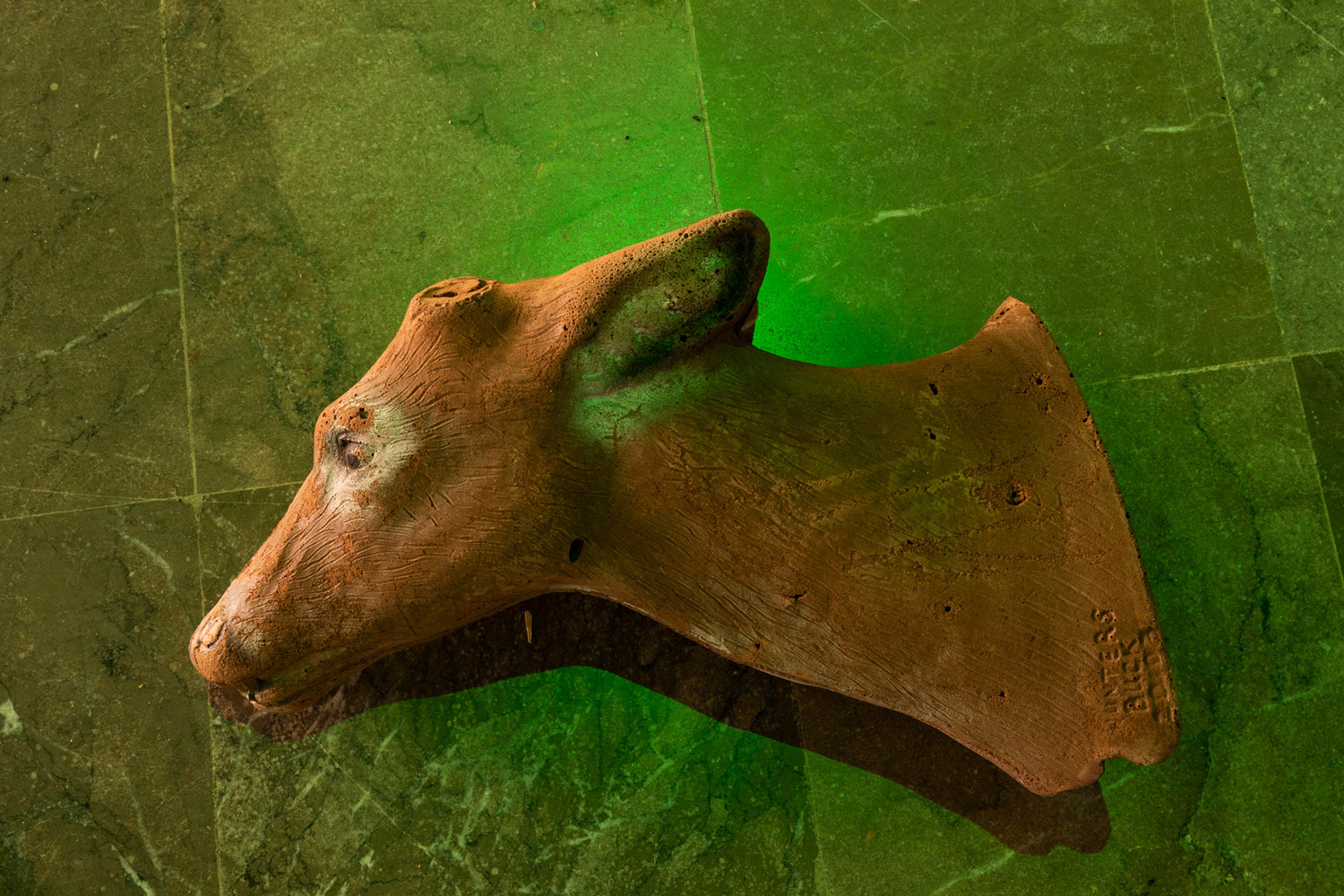Exhibitions:
Joan Miró Foundation (Barcelona) 2017, Azkuna Zentroa (Bilbao) 2018, Centre Carme (Valencia) 2019, Seager Gallery (London) 2019, Open (Reykjavík) 2019, Tranzit (Bratislava) 2020.
Description:
Different case studies related to the decline in the wolf population in the forests of Álava (Basque Country) form the basis of this proposal, an installation constructed from architectural, sculptural, audio, olfactory and visual elements in dialogue with each other.
In the exhibition space, Reserve is presented as a series of pieces based on different temporalities that sensorially engage visitors. Footage filmed in the regions of Añana and Zuia, along with other materials related to Ortín’s observations during his research in these enclaves, are directly or indirectly linked to a specific phenomenon: the drastic reduction of the wolf population in these parts of Álava in recent decades. Through four case studies that revolve around this core idea, Gerard Ortín shows some of the effects arising from the absence of the predator, as well as various human interventions that have been implemented in an attempt to neutralise it.
Photograph of the Lobera de Barrón structure built to hunt wolves. Source: El trampeo y demás artes de caza tradicionales en la Península Ibérica (Editorial Hispano Europea, L’Hospitalet de Llobregat, 2002, p. 142).
I. Convergent-walls wolf trap
The first case study focuses on the wolf traps that were once built in northern Spain. In the absence of predators, some of these sites have become community land that function as “leave islands”: areas that are voluntarily abandoned in order to stimulate the spontaneous growth of vegetation and biodiversity. They are now residual constructions in wooded zones, where the vegetation has grown so wild and luxuriant that it has overflowed the boundaries of the structures. In the exhibition, the nature, form, and function of the wolf traps is reflected in the actual reconfiguration of the space through architectural elements and sensory devices that reproduce the sense of confinement and confusion imposed by the traps. Convergent-walls wolf traps are a kind of “active trap”, which, unlike passive traps, require the prey to be driven along one of the two funnel-shaped walls that lead to a deep pit. The sound that hunters made during these drives, which was key to activating the traps so that the wolves would be caught in them, is used in a similar way in the exhibition, to delimit and influence the way visitors move through the exhibition space.
II. Archer
Another of the main elements in the show is a green LED light activated by a motion sensor. As the colour frequency emitted by this device is not easily perceived by many animals, it is often used in bow hunting. In the exhibition, this light introduces a new sensorial stimulus that makes reference to the perceptual thresholds of animals, and to another of Ortín’s case studies: the evolution of the figure of the archer and of the practice of archery, in parallel to that of the wolf, in these areas. One specific part of the exhibition room is set aside for a group of sculptural figures representing Iberian fauna, which are actually targets used in a kind of archery practice in which three-dimensional foam animals are scattered through a forest, with the idea of decoupling the idea of death from the practice of bow hunting. But paradoxically, the somewhat anachronic figure of the hunting archer, which also takes us back to the origins of hunting, has taken on an important role in the preserve of some ecosystems. Some regional governments hire marksmen to round up certain animals whose presence has grown too quickly and is threatening the balance of the ecosystems of protected zones or urban centres, as in the case of wild boars.
III. Wolf urine
Another consequence of the absence of wolves has been the increase in the population of species that they used to prey on, such as wild boar and roe deer, and the effects of this on their habitats and behaviour. In another case study, Ortín considers the fact that the use of urine by wolves to mark their territory is now being artificially reproduced on some roadsides and crossroads, where bottled urine is used to dissuade animals from going near them. A photo placed on one of the edges of the exhibition room refers to this phenomenon, as does a large puddle of wolf urine on the floor, which introduces an olfactory stimulus and uses organic material to mark the boundaries of a specific perceptual universe – an Umwelt – that we are excluded from. Through a kind of atrophy, disorientation, or domestication of the senses, we have unlearnt the sensory aspects of this non-human signage system that we nonetheless manipulate to suit our interests.
IV. Vultures
The reduction on the number of wolves in some areas has also led to a decrease in the presence of carcasses of dead animals, which certain scavenging species used to feed on. In order to counteract this effect, maintenance services in certain protected areas now procure food for these animals. Ortín’s last case study in Reserve examines this dynamic through a recording of a fenced-off area in a nature park where scavenger birds, mainly vultures, are fed.
Many of the phenomena and situations explored in the four case studies reappear in a film projected on a big screen made of black foam panels (the same material used to make the 3D archery targets), placed at the end of the exhibition. Architecturally, the structure evokes the right-hand wall of a lobera or wolf trap. The film connects all the other elements that make up Reserve. It is also the part of the exhibition in which the image most clearly prevails, as opposed to the other interventions that do not privilege the visual regime and instead approach representation synaesthetically, through olfactory, auditory, and tactile stimuli. The unhurried pace and sequential progress of the film is also juxtaposed with the multiple, heterogeneous temporality of the other pieces, so that time is drawn out and unevenly paced, with breaks, simultaneity and asynchrony, contrasting with human rhythms and the conventional linearity of exhibitions. Thus, in Reserve, Ortín presents a sensory device that reveals other, less anthropomorphic ways of interacting with space that are perhaps more like those of animals and other non-human forms, and provide a perceptual and sensory, rather than conceptual, approach to the notion of the boundary.
Text by Alexandra Laudo. Download curatorial text.
Photographs:
Credits:
Display Production:
Cristian Herrera Dalmau
Production Assistance:
Irati Gorostidi
Medium Format Photographs:
Irati Gorostidi
Ainara Elgoibar
Cámera:
Álvaro Sau
Exhibition Photographs:
Pere Pratdesaba (D. Joan Miró)
Iván Navarro (Centre Carme)
Acknowledgements:
Aeromedia
Jose Ramón Arana Basabe
Arkulagunak
Arqueros de Rubí
Arteklab
Ignacio Bilbao
Brafim Mecplast
Anna Maria Castellví
Albert Coma
Jorge Ferreira
Antonio Morillo (Arcocaza Álava)
Núcleo Zoologico Tuesta (Hotel Amona)
Gabriel Àngel Ortín Rull
Valderejo Natural Park
Luis Vidal
With the collaboration of:
Azpi Kultur Elkartea
With the support of:
Tractora Koop, E.
Azala Espacio
Tabakalera
